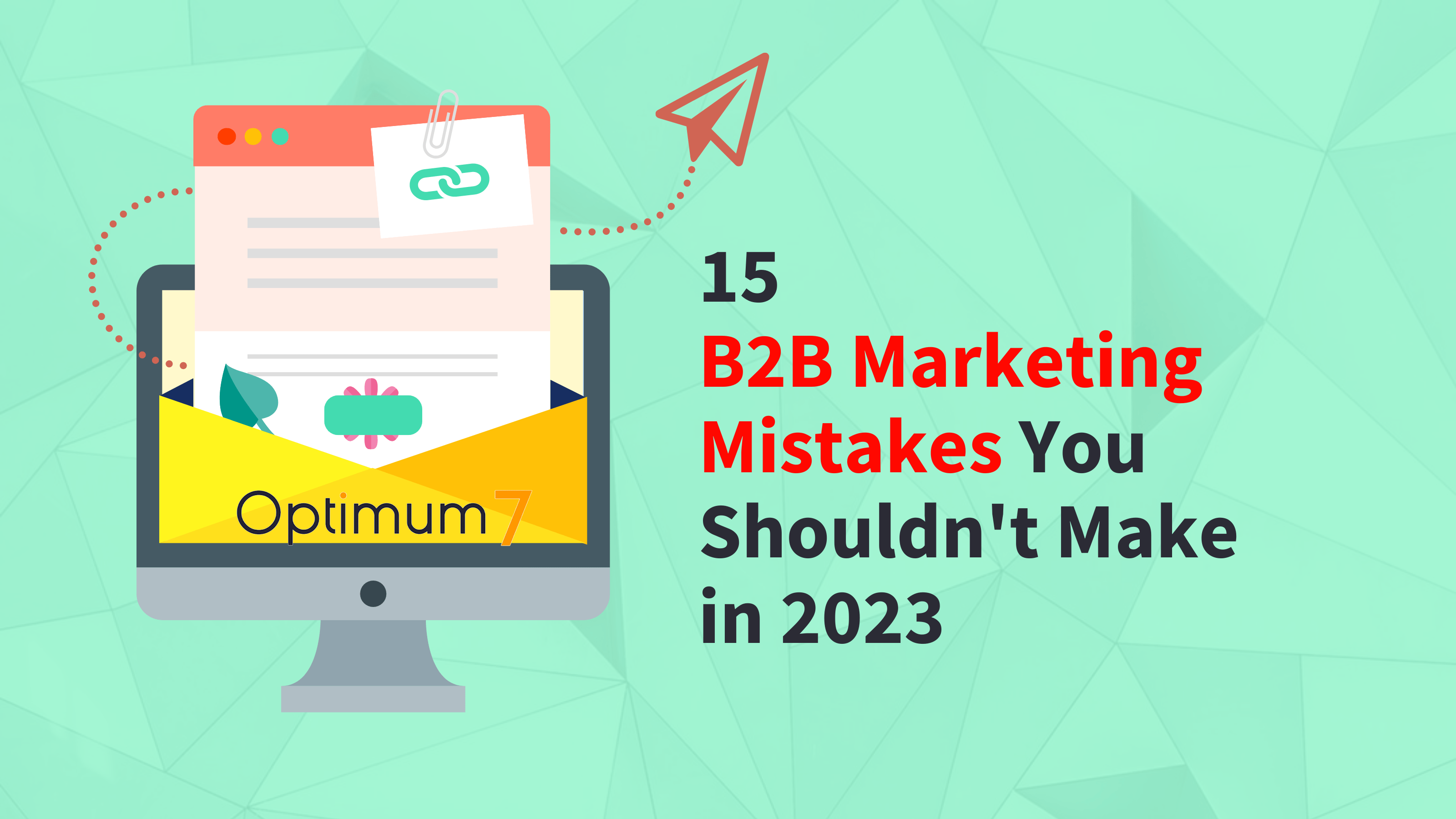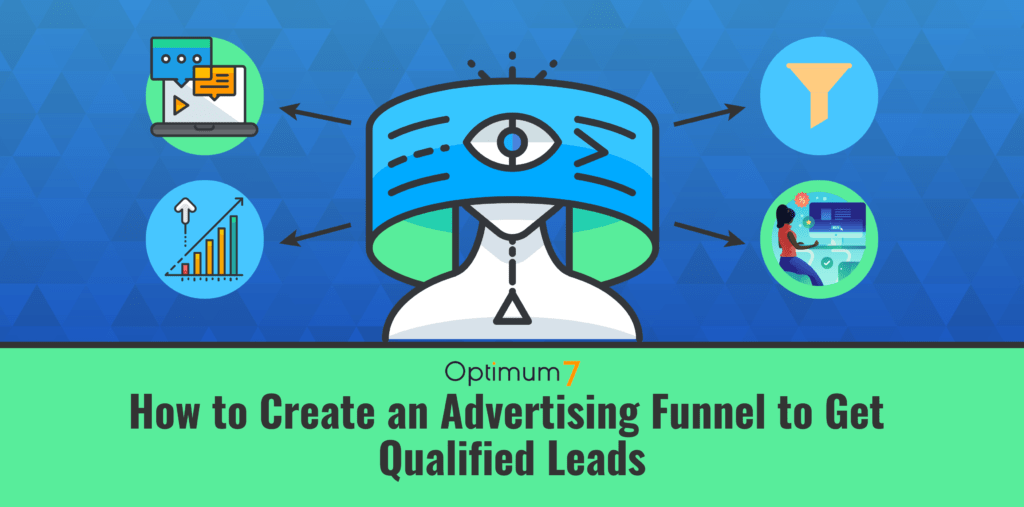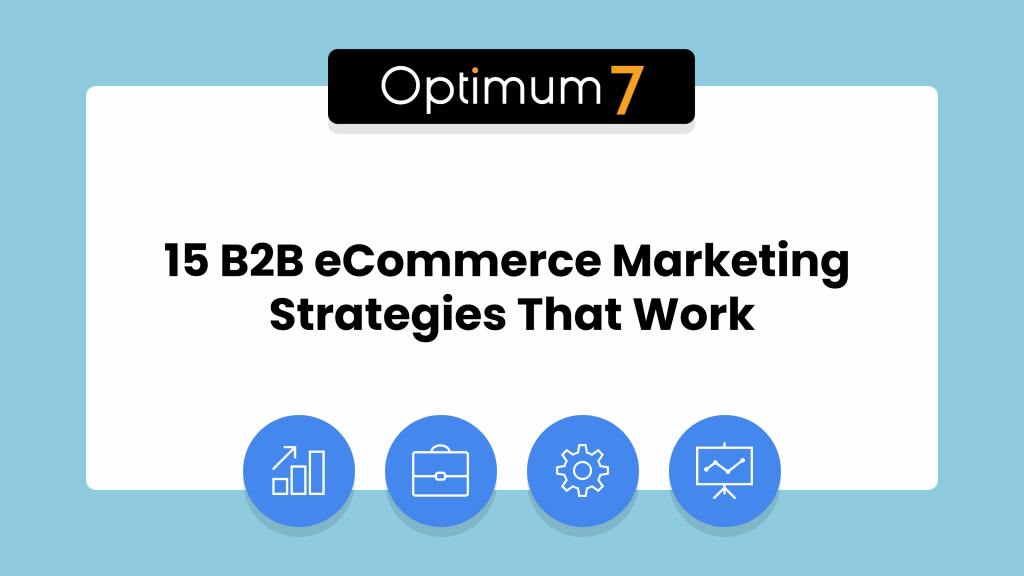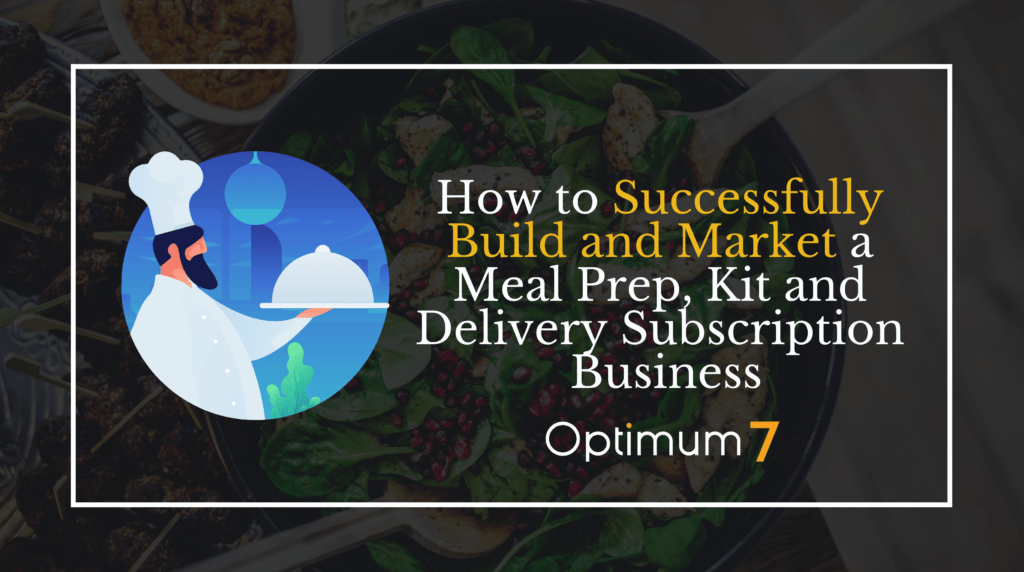The B2B industry is getting increasingly competitive. As a B2B marketer, you have to be on top of your game with marketing campaigns if you want success.
There are many competitors in this industry and it often comes down to the smallest detail which gives you the competitive edge.
As we face an unprecedented pandemic, the balance of power has shifted to B2B marketing teams.
Suddenly, digital presence and email campaigns are all that can get your business development success in this new world order. Alliances need to be struck between sales & customer experience departments to lessen the mistakes.
Alignment, collaboration, and mutual respect between sales and marketing teams have to be the goal.
In this article, we’ll list the top B2B marketing mistakes that many marketers make without knowing it and how to fix them.

1. Search Engine Optimization is a Crucial Element
Yes, search engine optimization is THAT important. If you are still not doing it you are leaving so much money on the table.
And it’s unbelievable that this is a common mistake made by many other businesses since this is the number one lead generation tool.
71% of B2B researchers begin their research with generic Google searches. And 61% of B2B decision-makers start the decision-making process with a web search.
All this means that your B2B business website needs to rank on the first page of Google search.
Ignoring SEO will lose you so much traffic, leads are also at stake when a site cannot be found through their searches.
The power of an organic search engine ranking is incredible. By finding your business organically, people will be able to appreciate the fact that your page is authoritative and valuable. You really got to see from their perspective when marketing content online.
How do you start the Search Engine Optimization of your page?
Begin with the basics. Tackle your website’s on-page SEO, which involves optimizing:
-Page titles, meta descriptions, and URLs for the right keywords(search intent).
-Page load speed: by reducing redirects, enabling caching, minifying the code…
-Use PageSpeed Insights to get exact recommendations on how to improve your site speed.
-Content such as your blog posts for structure, comprehensiveness, keywords, and internal links.
-Images for file size (compression) and relevant, descriptive alt text.
Then, build a backlink strategy that will help you get quality links from high-ranking websites by guest posting.
This is important because Google rewards sites with more inbound traffic and authoritative content which are key to achieving first page rankings these days!
When you are just starting out, it can be quite a daunting task to keep up with SEO. However, if your company has enough clients and needs more traffic invest in a specialist SEO agency.
Oftentimes these specialists will do everything. From managing keywords, creating backlinks, and optimizing your page to rank higher on Google.
2. Don’t use Excessive Jargon
You may think that using jargon freely in your digital marketing collateral, such as blog posts and lead magnets (e-books), will help you come off sounding sincere.
But marketing teams make a big mistake here! Jargon can quickly turn a professional tone into something less than desirable for audiences who are looking to engage with content on an intellectual level rather than just read it cover-to-cover or consume passively via social media feeds.
Sure, in the right context and to some extent using jargon is reasonable and necessary. It shows that your company is knowledgeable in its niche and knows its stuff.
People who don’t really know what they’re talking about tend to use vague and general wording. So using specialized language helps exude brand authority and may even help you rank for specific keywords.
But using too much jargon can be offputting to your audience.
They might have trouble understanding what you’re saying, or worse. Eventually, they’ll get overwhelmed by the content itself and your marketing efforts will go to waste.
To overcome this problem you must know your target audience, how old they are, what is their job, how do they talk…
Creating content without knowing your audience is a mistake you shouldn’t make. When you research your audience well, you can tailor your writing to better resonate with them. In other words, write the way they write.

3. Have a Responsive Design
The rise of mobile devices has caused a global shift in web browsing: it’s now the dominant way we access information and entertainment online.
In 2017, over half (50%) or more than 5 billion people used their smartphones as their primary device to go online; not just for accessing websites but also social media sites such as Facebook.
It’s no secret that Google ranks websites by indexing the version of your site you have available for mobile users.
With so many people using smartphones over desktop computers, this means ranking high with Google is all about making sure visitors can easily navigate through every area on their device without delays or difficulties – which in turn increases its chances of being shared!
Don’t make the mistake of not using responsive design. This will seriously hurt your site’s user experience, and stop you from ranking high.
Minimizing the amount of typing needed is a great way to save your potential customers some trouble.
By merging multiple fields into one, you can utilize auto-fill wherever possible and quickly get back on track with what matters most!
Optimize your website for mobile devices by compressing images, minifying the code with fewer redirects and faster load time.

The “thumb zone” is the easy-to-reach area of your screen that you can use with one hand when holding it.
This means optimizing content for this space will increase its visibility on potential customers’ devices, which are usually held in their left hands as they browse online stores or read news articles!

4. Track Your Metrics Regularly
Metrics are an essential part of all marketing campaigns, and analytics tools help you get a clear understanding of how well the campaigns are performing.
Whether hitting your desired goals or not can be determined through metrics as well changing something that may need some work might avoid wasting valuable marketing resources like time and money on ineffective strategies.
The benefits associated with using metrics include knowing if we’re reaching our target audience correctly so far.
Whether they have been affected positively by all aspects’ content across social media channels such as Facebook ads coupled together nicely by Google Adwords sponsored messages being able to see which parts aren’t working properly from here forward.
It’s important to track your metrics regularly, so start today. Define the key performance indicators for each marketing channel (search, social media posts, or reviews) and use analytics tools.

5. Embrace Technology
In the digital age, it is crucial for businesses to embrace technology and integrate them into their website.
With so many great tools and software available on a given day in this chaotic marketplace—it can be difficult to know what’s best if not strategic about your investments going forward
A business needs an effective roadmap that helps them invest wisely – while keeping performance high with some structured guidelines about how best to do these things effectively through research!
The right tools and tech can help you grow your business, but they’re useless if marketing team members don’t know how to use them.

6. Not Cleaning Up Your Database
You already have a lot of customer and competitor data, but you need to clean it up regularly in order for it to be truly useful.
Taking the time to clean your database is like eating those veggies you know are good for you, but it doesn’t feel very appetizing.
The importance of customer data can be seen in all aspects of your marketing. Dirty, inaccurate, or obsolete information will do more harm to a business than good.
And your database should always be updated with current results from surveys, interviews, and research at least every 6-12 months for CRM systems as well as database software so it reflects the latest findings which make sure relevant campaigns get off to an effective start!

7. Ignoring Email Marketing
Email marketing is an important part of any business’s marketing strategy since it’s a certified lead magnet. Ignoring email marketing could cost your company A LOT OF money.
A recent study by SmartInsights revealed that every 1$ spent on content promotion through email comes back as 40$.
It’s amazing how much you’ve missed out on by ignoring email promotions simply because they seemed outdated. Don’t do that!
Data shows it’s one of the best ways to generate leads and keep your B2B buyers informed about offers or products. So don’t let this opportunity slip away from your feet. Why not take advantage of this?

8. Using Social Media Poorly
Social media marketing is an effective way to build your brand voice. Whether you are a B2B or B2C business, social marketing channels can help you with content marketing as well as building your business.
Social media is a powerful tool for connecting with your potential customers, nurturing leads, and building brand awareness. It’s also an excellent way to establish meaningful relationships with existing consumers by building brand awareness!
Social media can be a great way for businesses of all sizes to interact with their customers, but there are some common mistakes that B2B marketers make. One mistake many other businesses make when they first start using social networks is seeing these sites as simply an opportunity to broadcast promotional messages rather than focusing on engagement and conversation between both parties. It’s important not only to use this form of advertising medium in order to stay current within your industry trends; it also enables you to engage those interested enough so as keep them interested long term by providing quality content instead of what most companies do: just putting out information without context or insight.
9. Being Too Pushy with Your Product
The B2B buyer is looking for information, not a sales pitch. Don’t be too salesy. They want to make well-informed decisions and find out if your offer is worth the purchase before they buy it. 93% of marketers say interactive content like infographics or videos is much more effective than static text alone so try using those on your landing page as part of all social media posts!
In order to be a successful business, you have to do more than just provide customers with discounts or descriptions about how good your product is. What people are looking for now is a buyer’s journey that will make them feel like their stake in what you offer and invest time into learning about your company’s product or service before making up their mind on whether it was worth spending money on.
No. 1 of marketing mistakes to avoid: shoveling CTAs down your potential buyers’ throats when they barely know anything about it. So long story short don’t be too salesy or pushy with your product instead give them a good customer experience.

10. Not Leveraging Calls to Action (CTA)
It’s like going on a date with someone and then at the end just sort of quietly walking away instead of clearly asking them for another one. If you don’t do this, they may think that you are not interested in seeing each other again so it is important to be professional when making calls-to-action buttons as well!
Or you might be using call-to-actions everywhere so much that it’s overwhelming. If this is the case you have to check if they are doing their job. It’s possible you are using all the wrong call-to-action buttons. Your website, social media captions, and landing pages might need a makeover if they’re not doing what they should be!
You want to make sure that your website and social media ads are designed with the careful crafting of CTAs in mind. When new and existing customers are browsing, you should guide them towards certain actions so they become leads for your brand. To enable this you should:
- Rather than vague CTA copy like “Click Here” or “Submit,” go for the descriptive, benefit-oriented copy with action verbs like “Get Your Free Guide” or “Start Your Free Trial.”
- Have some negative space around the button so you don’t crowd it and confuse the site visitor.
- Ensure that the CTA button stands out from other elements and is instantly visible.
- Use a color that aligns with your branding and contrasts with the rest of the page.
11. Not split testing regularly
Testing and analyzing the results is key to improving anything, let alone B2B marketing. You can’t really put your finger on what needs improvement if you don’t test different approaches or analyze how well they performed for each individual campaign goal!
The first draft of your landing page copy may not always be the best-performing one. If you test a few versions over some time, it’s likely that another variation will convert higher than what was written in the beginning!
Split testing isn’t just useful for landing pages. It’s essential for driving better results in various aspects of all your marketing campaigns.
There are various elements you can split test to optimize performance, improve certain marketing B2B marketing strategies and increase conversion rates as well.
Split testing is an important method to find what works best for your campaign. If you don’t split test, then you will always miss out on improvements because so much can change in one small tweak or new idea. But with split testing, it is so much easier to spot your marketing mistakes.

12. Ignoring the Value of Content Marketing
This is a common mistake that companies do when B2Bmarketing. Over 63% of businesses don’t have a content marketing strategy! This means they’re losing out on all the traffic that could contain potential leads generated and ultimately sales.
With the rise in demand for competitive content, you need to invest time into learning your target audience and understand how valuable it is. It is only when you understand your target audience that you will be able to create content that will cater to their needs and create value. Offering 1 piece or 2 per month will give your company a competitive edge. Instead, consider developing an entire series that focuses on one topic at a time and release them monthly so they can gain momentum amongst readers.

13. Creating Content Without Sufficient Knowledge
With content and research being so important in today’s market, you’ll want to make sure your business has a professional tone of voice. More than 51% of B2B buyers have stated that they rely on the quality of written materials before making any decisions; meaning if these people don’t understand what it is about or haven’t been presented with enough information then there won’t be any sales at all! You have to sound like you know what you are talking about and, professional as well.
Make sure you have the knowledge and the details before churning out content. Let potential buyers navigate from your posts and videos knowing all there is to say about what they’re getting themselves into. Leave no room for doubts!
14. Being Repetitive With Your Content
Repetitive content can help you to better understand a concept. But in the world of marketing, it’s important not to post repetitive material. Instead, your content strategy should be about posting topics that offer new information or insights on an old topic every so often- at least twice per week! If people are bored with their feeds flooded with only one type of post from an author they quickly get turned off and stop paying attention. This is detrimental both for business owners who depend upon customer feedback as well as readers whose appetite may change if fed too many bites by one source alone.

15. Not Building Your Own Lists
Buying data lists can be a bad idea because major email providers often consider what you send to be spam. If your goal is marketing, buying an entire list isn’t always cheaper or easier than building one for yourself for the same cost. With content tailored specifically towards them instead of generalized emails sent out blindly across different groups.
Conclusion
When you’re working under a tight budget and in a competitive marketplace, your mistakes in a B2B marketing strategy can have a huge impact on the success rate of your marketing efforts. Learn your mistakes and fix them. That’s the only way to optimize your marketing strategies. Find new customers, more leads, and improve customer relationships with these tips. By fixing these mistakes you can give them a better customer experience which will turn new customers into loyal customers.





